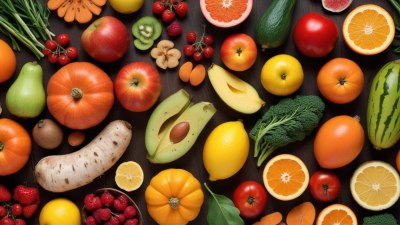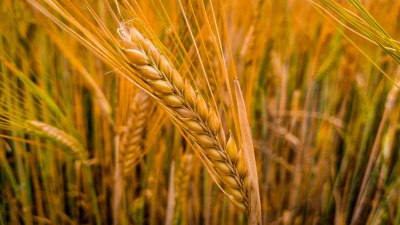How Seasonal Foods Shape Our Diet Without Us Noticing
Explore the impact of seasonal foods on our diet and health, and how they influence our eating habits subtly.

This image was created with the assistance of Freepik
Seasonal foods have a profound impact on our diets, influencing not only what we eat but also how we feel and function on a daily basis. The rhythm of nature sets the stage for what is available at different times of the year, often dictating the flavors and nutrients that grace our plates.
Historically, people relied heavily on seasonal produce, adapting their eating habits to what was freshly harvested. This practice fostered a closer connection to the land and contributed to a diverse array of diets based on geographic regions. Even though modern advancements in agriculture and transportation have enabled us to access a plethora of foods year-round, the benefits of seasonal eating are becoming increasingly recognized.
Understanding Seasonal Eating
Seasonal eating refers to the practice of consuming foods that are in season within a specific region. This means taking advantage of fruits, vegetables, grains, and proteins that are naturally available at that given time. The most compelling reasons to adopt a seasonal diet stem from the inherent nutritional quality and flavor of these foods. When eaten at their peak ripeness, seasonal foods are often richer in vitamins and antioxidants, as they are picked at the optimal time for flavor and nutritional value.
Furthermore, seasonal foods tend to be more flavorful. Think of biting into a sun-ripened tomato in the summer versus a mealy tomato in the winter. The taste experience is vastly different, and this fluctuation in flavor can significantly influence our culinary enjoyment and satisfaction. Moreover, seasonal foods can also be less expensive, as they require less transportation and storage costs. Eating with the seasons can potentially lead to a more economical food budget while enhancing our overall health.
The Health Benefits of Seasonal Foods
Incorporating seasonal foods into your diet has numerous health benefits. For one, fruits and vegetables are at their peak nutritional value when harvested in season. For example, winter root vegetables like carrots and beets are rich in vitamins A and C, providing essential nutrients during the colder months when our bodies might require extra immune support. In contrast, summer offers an abundance of fresh berries and greens, packed with antioxidants that help combat oxidative stress as we become more active in the warmer months.
Moreover, seasonal eating can promote better digestion and gut health. Consuming foods in alignment with the seasons can help our bodies adapt more fluidly to changes in temperature and daylight hours. For instance, as we move into winter, the body often craves warming foods like squash and hearty grains, which can help maintain our internal body temperature and comfort.
Connecting with Seasonal Foods
One of the most exciting aspects of seasonal eating is the opportunity to connect with local farmers and community supported agriculture (CSA) programs. These initiatives encourage us to purchase food directly from the source, supporting local economies and sustainable practices. By participating in these programs, one can enhance their understanding of the growing seasons and the biology of food production.
Joining a CSA can also intentionally diversify our palate, as these farms often introduce members to unfamiliar vegetables or fruits that we may not typically buy from a grocery store. It can foster creativity in the kitchen, encouraging experimentation and the exploration of new recipes that highlight seasonal ingredients. Engaging with the seasonal food community opens doors to workshops, festivals, and farmer’s markets, reinforcing our connection to food sources and fostering community relationships.
Environmental Considerations
Beyond personal health benefits, seasonal eating has positive implications for the environment. Consuming locally grown food reduces the carbon footprint associated with transportation and packaging, aligning our food choices with sustainability goals. In addition, seasonal farming practices often emphasize biodiversity, encouraging crop rotation and sustainable growing methods that are essential for the health of our ecosystems. By supporting these practices through our food choices, we contribute to a robust local food system.
Moreover, seasonal eating can also lead to a reduction in food waste. When we focus on ingredients that are abundant and in season, we are less likely to purchase excess produce that may go unused. Meal planning around seasonal offerings increases efficiency in our kitchens and helps us utilize ingredients before they spoil. This conscientious approach toward food sourcing fosters a healthier relationship with food and contributes to more sustainable habits.
Adapting to Seasonal Changes
Transitioning to a seasonal diet may require a shift in mindset and lifestyle. As seasons change, our cravings and eating patterns naturally vary. In spring and summer, our bodies often seek lighter foods, while in fall and winter, heartier flavors may become more appealing. By mindful observation of these shifts, we can better align our meals with our natural desires and the offerings around us.
Planning meals seasonally can begin with simple strategies, such as exploring local farmer’s markets or using seasonal food calendars available online. These resources can assist in discovering the crops that are currently in season, allowing us to make informed choices when shopping. Cooking with the seasons can range from simple salads featuring robust greens in spring to simmering soups made with winter squash and root vegetables, creating a cozy atmosphere during colder months.
Ultimately, seasonal foods shape our diet in subtle yet significant ways. From enhancing our nutritional intake to fostering connections with local communities and the environment, the benefits extend far beyond our plates. As we start to embrace the multitude of flavors and nutrition that seasonal foods provide, we not only elevate our unique culinary experiences but also support holistic wellness. Eating seasonally invites us to partake in the natural cycles of life, cultivating gratitude and mindfulness along the way. By remaining aware of our food choices and opting for what is locally and seasonally available, we contribute to a healthier, more sustainable future for ourselves and generations to come.











